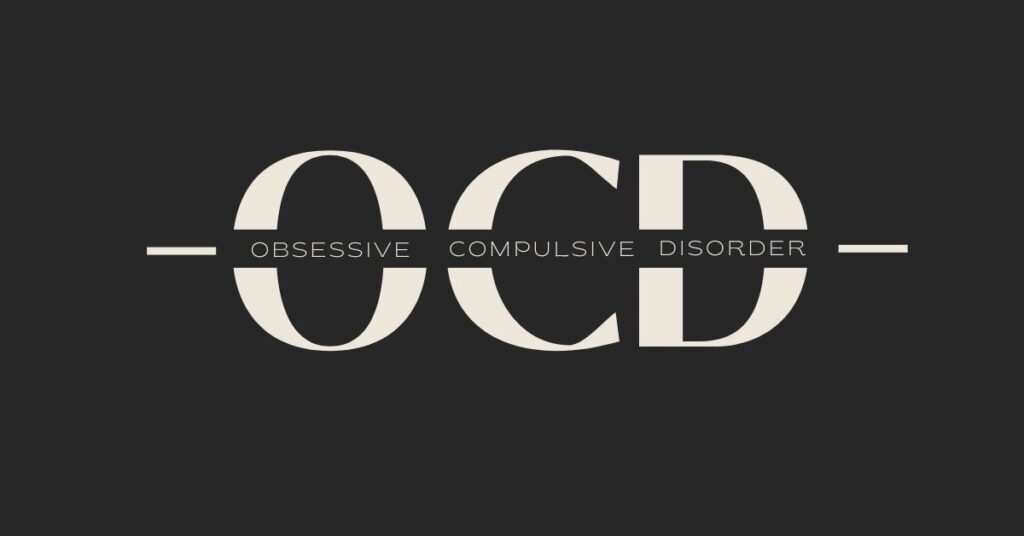
Obsessive Compulsive Disorder (OCD) stands as a statement to the intricate interplay of thoughts and behaviours that can profoundly impact an individual’s life. Far beyond the colloquial use of the term, OCD is a clinically significant mental health condition characterized by persistent, intrusive thoughts (obsessions) and repetitive behaviours or mental acts (compulsions). This article delves into the diagnostic criteria of OCD, providing a nuanced understanding of the elements mental health professionals use to identify and address this challenging disorder. By exploring these criteria, we aim to shed light on the labyrinth of OCD, fostering empathy, and offering insights into the path toward understanding and managing this complex mental health condition.
Obsessions are intrusive, unwanted, and distressing thoughts, images, or urges that repeatedly enter an individual’s mind. These thoughts are often irrational, but they cause significant anxiety and discomfort. Despite being aware that the obsessions are not based in reality, individuals with OCD find it challenging to dismiss or control these intrusive thoughts.
Common types of obsessions include:
- Fear of Contamination: Persistent fears of germs, dirt, or a perceived uncleanliness, leading to compulsive behaviours like excessive handwashing or avoidance of certain places.
- Fear of Harming Oneself or Others: Intrusive thoughts about causing harm to oneself or others, leading to distressing fears and compulsions to prevent harm, such as checking and rechecking appliances or avoiding certain situations.
- Fear of Making a Mistake: Overwhelming fears of making a mistake or not doing something perfectly, leading to compulsions like repetitive checking or seeking reassurance.
- Intrusive Sexual Thoughts: Unwanted and distressing sexual thoughts that go against an individual’s moral or ethical beliefs, leading to compulsive behaviours to neutralize the thoughts.
Compulsions in Obsessive Compulsive Disorder (OCD):
Compulsions are repetitive behaviours or mental acts that individuals with OCD feel compelled to perform in response to their obsessions. The goal of these compulsions is to reduce anxiety or prevent a feared event or situation, even though the actions are not connected to the event in a realistic way. Despite providing temporary relief, compulsions are not effective in the long term and often become time-consuming.
Common types of compulsions include:
- Washing and Cleaning: Excessive handwashing, showering, or cleaning rituals to alleviate fears of contamination.
- Checking: Repetitive checking of locks, appliances, or other items to ensure safety and prevent harm.
- Counting: Counting in a specific way or a certain number of times to reduce anxiety or prevent a feared event.
- Repeating Actions: Repeating routine activities a certain number of times to prevent a negative outcome.
- Mental Rituals: Engaging in mental acts, such as praying, counting, or silently repeating words, to neutralize intrusive thoughts.
Compulsions often become rigid and ritualized, and individuals with OCD may feel driven to perform them in a specific and precise manner. The cycle of obsessions and compulsions can significantly impact daily functioning and diminish overall quality of life for individuals with OCD.
According to DSM, Obsessive Compulsive Disorder (OCD) is categorized within anxiety-related disorders due to the prominent role that anxiety plays in its manifestation. While OCD involves more than just anxiety, the condition is intricately connected to heightened levels of anxiety and distress.
At the heart of OCD are persistent, intrusive thoughts (obsessions) that cause significant anxiety. These obsessions often revolve around fears of contamination, harm, making mistakes, or other distressing themes. The anxiety triggered by these obsessions compels individuals to engage in repetitive behaviours or mental acts (compulsions) as a way to alleviate the distress.
Secondly, Compulsions, the repetitive behaviours or mental rituals performed in response to obsessions, serve as anxiety-driven attempts to gain a sense of control or prevent feared outcomes. For example, someone with contamination fears may compulsively wash their hands to alleviate the anxiety associated with the obsession.
Furthermore,OCD operates in a cyclical manner. Obsessions lead to heightened anxiety, and compulsions provide temporary relief. However, the relief is short-lived, and the anxiety returns, fuelling a perpetual cycle. This cycle significantly contributes to the classification of OCD within the spectrum of anxiety disorders.
Lastly, OCD often coexists with other anxiety disorders, such as generalized anxiety disorder or social anxiety disorder. The shared element is the presence of excessive and distressing anxiety. Additionally, individuals with OCD may experience anticipatory anxiety related to the possibility of obsessions surfacing or the need to perform compulsions.
Obsessive Compulsive Disorder (OCD) is a mental health condition characterized by the presence of obsessions, which are intrusive and distressing thoughts, images, or urges, and compulsions, repetitive behaviours or mental acts performed in response to the obsessions.
To meet the diagnostic criteria for OCD according to the DSM-5 (Diagnostic and Statistical Manual of Mental Disorders, Fifth Edition), an individual must experience:
1. Presence of Obsessions: Persistent and intrusive thoughts, images, or urges that cause significant anxiety or distress. These thoughts are not simply excessive worries about real-life problems.
2. Engagement in Compulsions: Repetitive behaviours or mental acts that the individual feels compelled to perform in response to the obsessions. The aim is to prevent or reduce anxiety or distress or to prevent a feared event or situation. These compulsions are not connected to the event in a realistic way or are excessive.
3. Time-Consuming or Impairing: The obsessions or compulsions are time-consuming (taking more than one hour per day) or cause significant distress or impairment in social, occupational, or other important areas of functioning.
4. Not Attributable to Other Conditions: The obsessions and compulsions are not attributable to the physiological effects of a substance or another medical condition.
5. Insight: The individual recognizes that the obsessions or compulsions are not based in reality, which distinguishes OCD from psychotic disorders.
Diagnosing OCD
- Clinical Interview:
The foundation of the assessment is a clinical interview conducted by a qualified mental health professional. This interview gathers information about the individual’s symptoms, their duration and intensity, and the impact on daily functioning.
- Diagnostic Criteria:
OCD is diagnosed based on specific criteria outlined in the Diagnostic and Statistical Manual of Mental Disorders, Fifth Edition (DSM-5). These criteria include the presence of obsessions and compulsions that significantly interfere with daily life.
- Standardized Psychological Tests:
Various standardized tests may be administered to assess the severity and specific nature of OCD symptoms. These tests often include self-report measures and clinician-administered assessments aligned with DSM-5 criteria.
- Behavioural Observation:
Direct observation of the individual’s behaviour in different settings, such as at home, work, or during social interactions, provides valuable insights into the manifestation of obsessions and compulsions.
- Symptom Checklists:
Individuals may be asked to complete symptom checklists that detail the types and frequency of obsessions and compulsions. These checklists help in quantifying symptomatology and tracking changes over time.
- Differential Diagnosis:
Distinguishing OCD from other mental health conditions is crucial. Mental health professionals consider other disorders with similar symptoms, such as generalized anxiety disorder, panic disorder, or specific phobias, during the assessment.
- Medical and Family History:
Gathering information about the individual’s medical history, including any neurological conditions or other medical illnesses, and exploring family history for the presence of OCD or related disorders provides a broader context.
- Age of Onset and Significant Life Events:
Understanding when symptoms first appeared and identifying any significant life events or stressors is essential for a comprehensive evaluation. The age of onset can also influence the course and prognosis of OCD.
- Social and Occupational Functioning:
Assessment extends to the individual’s social and occupational functioning. Impairments in relationships, work, and daily activities due to OCD symptoms are carefully evaluated.
Treatment approaches
Treatment for OCD typically involves a combination of therapeutic modalities, including:
1. Cognitive-Behavioural Therapy (CBT):
- Exposure and Response Prevention (ERP): ERP is a cornerstone of CBT for OCD. It involves exposing individuals to situations that trigger obsessions while preventing the accompanying compulsive behaviours. This gradual exposure helps individuals learn to tolerate anxiety without engaging in rituals, ultimately reducing the frequency and intensity of obsessions.
- Cognitive Restructuring: CBT also includes cognitive restructuring, which focuses on challenging and modifying dysfunctional thought patterns associated with obsessions.
2. Medication:
- Selective Serotonin Reuptake Inhibitors (SSRIs): SSRIs, such as fluoxetine, fluvoxamine, and sertraline, are commonly prescribed to manage OCD symptoms. These medications help regulate serotonin levels in the brain and can be effective in reducing obsessions and compulsions.
3. Mindfulness-Based Approaches:
- Mindfulness Meditation: Mindfulness techniques, such as meditation and mindful breathing, can help individuals observe their thoughts without becoming overwhelmed by them. Mindfulness-based approaches are often used as complementary strategies in managing OCD symptoms.
4. Psychiatric Consultation:
- Medication Evaluation and Management: Psychiatric consultation is essential for a thorough evaluation of medication options. A psychiatrist can assess the need for medication, adjust dosages, and monitor potential side effects.
5. Support Groups:
- Peer Support: Joining support groups, either in-person or online, provides individuals with OCD an opportunity to share experiences, coping strategies, and encouragement. Peer support can be invaluable in reducing feelings of isolation.
6. Family Involvement:
- Family Therapy: Involving family members in therapy can enhance understanding and support. Family therapy helps family members learn effective ways to assist and encourage their loved one with OCD.
7. Lifestyle Modifications:
- Stress Management: Adopting stress-reducing practices, such as regular exercise, adequate sleep, and healthy nutrition, can contribute to overall well-being and help manage OCD symptoms.
8. Ongoing Monitoring and Adjustment:
- Regular Therapy Sessions: Ongoing monitoring by mental health professionals ensures that treatment strategies remain effective. Therapy sessions provide a platform for individuals to discuss progress, challenges, and any necessary adjustments to the treatment plan.
Individuals with OCD often benefit from a personalized, multifaceted approach that addresses the specific nature and severity of their symptoms. Collaboration between mental health professionals, individuals with OCD, and their support networks plays a crucial role in navigating the path to recovery and achieving meaningful improvements in daily functioning.
While cognitive-behavioural therapy (CBT), including exposure and response prevention (ERP), and medication are foundational elements in treating obsessive compulsive disorder (OCD), the diversity of the condition necessitates a personalized and flexible approach. Therapists, through thorough assessment and evaluation, craft a treatment plan that aligns with the unique nature and manifestation of the individual’s symptoms.
9. Here are additional and alternative approaches that may be integrated based on the specific needs of the client:
Acceptance and Commitment Therapy (ACT):
ACT focuses on accepting one’s thoughts and feelings rather than trying to eliminate or control them. It emphasizes living in accordance with one’s values, promoting psychological flexibility.
Dialectical Behaviour Therapy (DBT):
Originally developed for borderline personality disorder, DBT incorporates skills training in emotion regulation, interpersonal effectiveness, distress tolerance, and mindfulness. These skills can be beneficial for managing the emotional challenges associated with OCD.
Neurocognitive Approaches:
Therapeutic techniques targeting cognitive functioning, such as cognitive remediation therapy, aim to address cognitive deficits and enhance cognitive flexibility in individuals with OCD.
Psychodynamic Therapy:
Exploring unconscious processes and early life experiences, psychodynamic therapy can provide insights into the roots of obsessive thoughts and compulsive behaviours. It may be particularly useful for those with underlying psychological conflicts.
Virtual Reality Exposure Therapy (VRET):
RET utilizes virtual reality technology to expose individuals to feared situations in a controlled environment. This approach can enhance the effectiveness of traditional exposure therapy.
Biofeedback and Neurofeedback:
Biofeedback involves using electronic monitoring to bring awareness to physiological processes like heart rate and muscle tension. Neurofeedback targets brainwave activity, aiming to regulate neural patterns associated with OCD symptoms.
Holistic Approaches:
Integrating complementary approaches, such as acupuncture, yoga, or mindfulness-based stress reduction (MBSR), can contribute to overall well-being and complement traditional therapeutic interventions.
Personalized Treatment Plans:
Recognizing that a one-size-fits-all approach is insufficient, therapists collaborate with individuals to develop treatment plans tailored to their preferences, cultural background, and specific symptomatology.
Family Support in Obsessive-Compulsive Disorder
Family support plays a pivotal role in the effective management and coping with obsessive compulsive disorder (OCD). Understanding the condition, providing empathy, and actively participating in the treatment process contribute significantly to the overall well-being of the individual with OCD. Here are key ways in which families can offer support:
1. Education and Understanding:
- Families can educate themselves about OCD, its symptoms, and treatment options. Understanding the nature of obsessions and compulsions helps family members empathize with the challenges faced by their loved one.
2. Open Communication:
- Encouraging open communication creates a safe space for the individual with OCD to express their feelings and concerns. Families can foster an environment where discussing symptoms, triggers, and treatment progress is met with understanding and support.
3. Involvement in Treatment:
- Families can actively participate in the treatment process. Attending therapy sessions, learning about exposure and response prevention (ERP), and implementing strategies recommended by therapists at home contribute to a supportive therapeutic environment.
4. Patience and Encouragement:
- Patience is key in supporting someone with OCD. Encouraging progress, no matter how small, and celebrating achievements in managing symptoms helps boost the individual’s confidence and motivation.
5. Avoiding Enabling Behaviours:
- While support is crucial, families should be mindful of enabling compulsions. Understanding the difference between helpful support and reinforcing compulsive behaviours is important for effective management.
6. Establishing Routines:
- Creating a structured and supportive routine can be beneficial for individuals with OCD. Predictability and consistency can help alleviate anxiety and provide a sense of control.
7. Seeking Family Therapy:
- Family therapy can be instrumental in addressing communication patterns, reducing family stressors, and enhancing overall family dynamics. Therapists can guide families in fostering a healthy and supportive environment.
Common Misconceptions about OCD: Dispelling Myths to Foster Understanding
1. Perfectionism:
- Myth: OCD is merely an extreme form of perfectionism.
- Reality: While perfectionism can be a feature of OCD, the disorder involves distressing obsessions and compulsions that extend beyond a desire for excellence.
2. Cleanliness Stereotype:
- Myth: OCD is primarily about cleanliness and order.
- Reality: OCD encompasses a wide range of obsessions and compulsions, and not all individuals with OCD have concerns related to cleanliness.
3. A Choice or Quirk:
- Myth: Individuals with OCD can simply choose to stop their obsessive thoughts or compulsive behaviours.
- Reality: OCD is a mental health condition with neurobiological roots, and individuals often lack control over their intrusive thoughts and behaviours.
4. Outgrown with Age:
- Myth: OCD is a phase that individuals will naturally outgrow.
- Reality: OCD is a chronic condition, but with appropriate treatment, individuals can learn to manage symptoms effectively.
Can OCD Be Outgrown?
OCD is generally considered a chronic condition; however, the severity of symptoms can fluctuate over time. With early intervention, effective treatment, and ongoing support, individuals with OCD can experience significant improvements in symptom management and overall quality of life. While the core features of OCD may persist, many individuals learn adaptive strategies to navigate their symptoms and lead fulfilling lives.
The diagnostic criteria for obsessive compulsive disorder (OCD) serve as guiding threads through the intricate landscape of this mental health condition. Beyond clinical definitions, they pave the way for compassionate care and targeted interventions. By acknowledging the persistent nature of obsessions and the compelling urge for compulsions, society can contribute to destigmatizing OCD and offer vital support to those grappling with its challenges. With precise diagnosis, comprehensive treatment, and understanding, individuals with OCD can embark on a journey of healing, resilience, and a future where the grip of obsessions and compulsions loosens.
Written By –
Ms. Sabeera Nowreen
Psychologist




